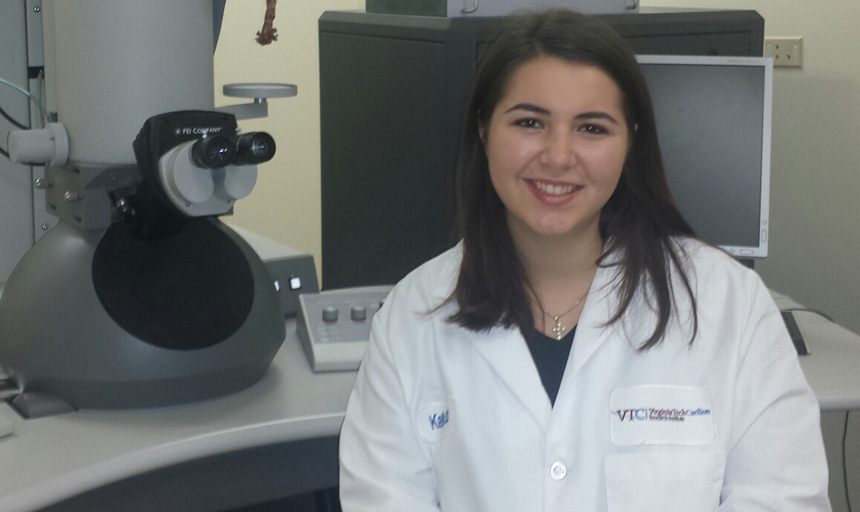Roanoke sophomore’s breast cancer research published in scientific journal
October 22, 2015

As a sophomore, Vasilea Karageorge '18 is already an experienced researcher at the Virginia Tech Carilion Research Institute in Roanoke. Along with several colleagues there, she recently published a scholarly article in Scientific Reports that outlines how their team used cutting-edge technology to identify the structure of BRCA1 gene mutations, which are linked to 25% of all breast cancers.
Karageorge, who is from Roanoke, has been with the Research Institute for three years, working under the mentorship of Institute professor Dr. Deborah Kelly and in collaboration with a team of doctors, scholars, and graduate students. She first applied to the Institute as a high school junior for a science project when she attended the Roanoke Valley Governor's School for Science and Technology.
Breast cancer has fascinated me from a very young age. I know many women close to me who have had breast cancer … We may not have found a cure yet, but we have definitely made progress and are closer than we ever have been.
Vasilea Karageorge '18
"A Molecular Toolkit to Visualize Native Protein Assemblies in the Context of Human Disease," the "Scientific Reports" article that Karageorge co-authored, discusses how the team tested a brand-new molecular imaging technique while researching mutated BRCA1 genes. The novel microchip technology and imaging methods they used are superior to current gene decoding processes, which are challenging, lengthy, and less accurate.
The work of Karageorge and her colleagues resulted in new information about the gene mutations, which also are implicated in ovarian cancer. "This finding is critical in understanding how mutations in the BRCA1 gene can lead to cancer," Karageorge said. "If we can understand why this mutation leads to cancer, we can, in the long run, determine more efficient ways to combat it."
"Breast cancer has fascinated me from a very young age," Karageorge said. "I know many women close to me who have had breast cancer ... We may not have found a cure yet, but we have definitely made progress and are closer than we ever have been."
Karageorge, who plans to double-major in biology and business administration and attend medical school, has presented her work all over the state and in Philadelphia. In addition to her research duties, she oversees two or three graduate students each semester, teaching them about the Institute's lab equipment and methods.